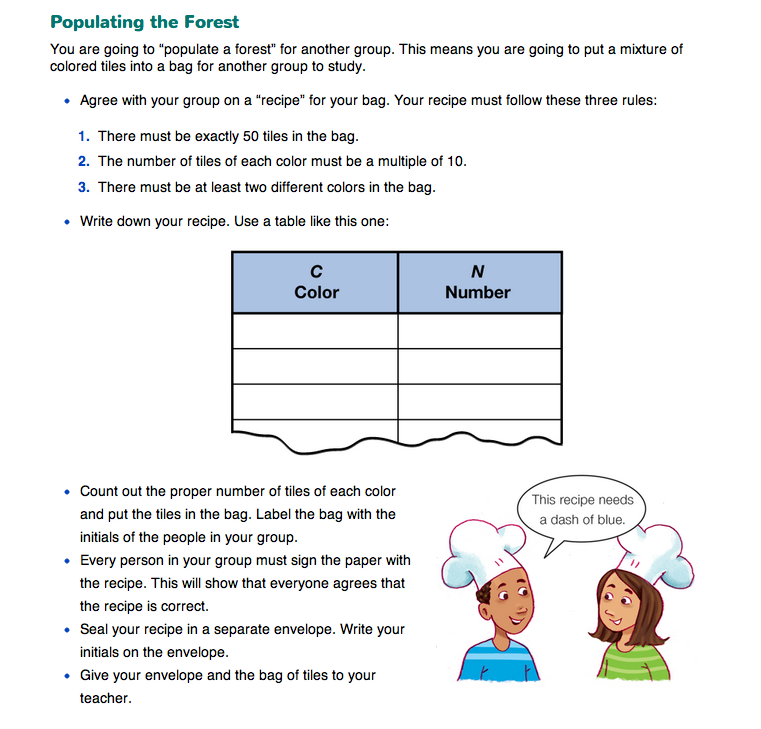Discuss Populations and Sampling.
Begin this part of the lesson by asking:
- When have you observed someone using a sampling method? (Possible response: Students are likely aware of grocery stores and restaurants offering a “sample” of a product to increase consumer interest in a product. Students may also refer back to the sampling method used by the Robinsons in the story “A Matter of Survival.”)
In this lab students will use a sampling method to predict the number of tiles of each color in a bag of 50 tiles. Explain that scientists often use a sampling method when they cannot observe an entire population.
Remind students about the Eyelets Lab that
they completed in the first lesson and then ask:
- How could you use the data that was collected about eyelets in our classroom to predict the number of eyelets in the entire school? (Possible response: If we think the number of eyelets in our classroom represents the average number of eyelets in each classroom, we can predict the number of eyelets in the whole school by multiplying the number of eyelets in our room times the number of classrooms in the entire school.)
Tell students that they will complete an experiment to help them better understand how to use sampling to draw conclusions about a population, even when you are unable to directly study the entire population.
Populate the Forest. Direct students to the Populating the Forest section in the Student Guide. Explain that each group of students will work together to create a “population” for another group to study by putting colored tiles into paper bags according to certain guidelines. To draw attention to the parallels between a rain forest and the bags, remind students that just as a rain forest might have many different animals such as toucans, jaguars, howler monkeys, and river otters, so the bag might have different-colored tiles such as red tiles, green tiles, and blue tiles.
Remind students that multiples of 10 are the numbers they say when they count by 10s.
Divide the students into groups of two to four. Ask each group to read and discuss the procedure that explains how to populate their bag with the colored tiles.
To check for understanding, ask:
- What are the three rules for filling each bag? (There must be 50 tiles in each bag. The number of each color must be a multiple of 10. There must be at least two colors in the bag.)
- Explain if it would or would not be possible to have an odd number of the same color of tile in a bag. (Possible response: It would not be possible to have an odd number of any one color because each color must be a multiple of ten and all of the multiples of ten are even numbers.)
- Explain if it would or would not be possible to have half of the tiles in one color and the other half of the tiles in a second color? (Possible response: It would not be possible to have half of the tiles in one color and half in another color because half of fifty is 25, and 25 is not a multiple of ten.)
- How will you record the recipe you used for populating your bag with inch tiles? (Possible response: Once we decide on the recipe, we need to record it on a data table. We each need to sign the recipe and then seal it in the envelope with our initials.)
As each group finishes populating their bag they will turn in both their bag and recipe. Remind students to check their bag and envelope to make sure they have labeled both with their initials.













